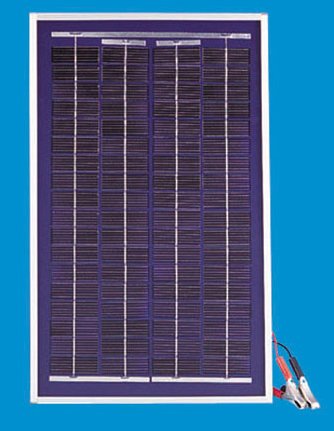small solar electric modules

In addition to solar cells, a typical photovoltaic (PV) module or solar panel consists of these components:
Energy performance ratings
Energy performance ratings for PV modules include the following:
Measures the maximum power of a module under laboratory conditions of relatively high light level, favorable air mass, and low cell temperature. These conditions are not typical in the real world.
Measures a module's nominal operating cell temperature after the module first equilibrates with a specified ambient temperature. It results in a lower watt value than the peak-watt rating, but it is probably more realistic.
Measures the performance of a solar module under more realistic operating conditions. It considers the whole day rather than "peak" sunshine hours, based on the description of a standard solar global-average day (or a practical global average) in terms of light levels, ambient temperature, and air mass.
